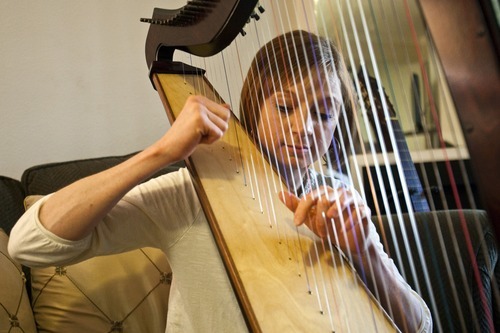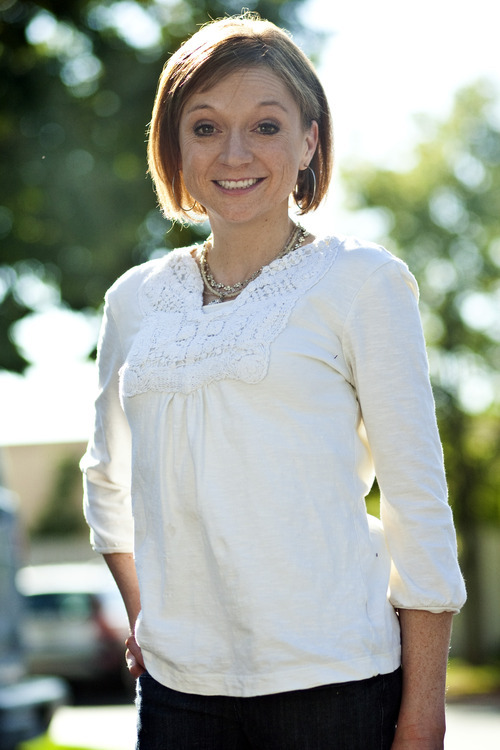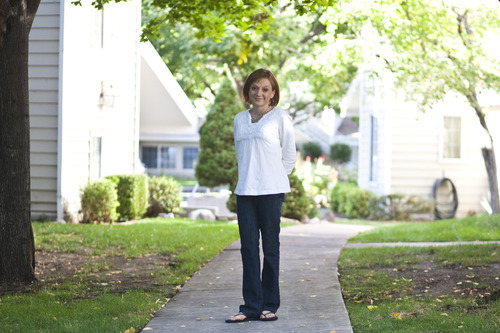This is an archived article that was published on sltrib.com in 2011, and information in the article may be outdated. It is provided only for personal research purposes and may not be reprinted.
There are few diseases as heartbreaking and frighteningly indiscriminate as childhood cancer.
But the prognosis for the 10,000 children diagnosed each year has greatly improved; 80 percent survive at least five years and many are cured.
It's the surviving adults that concern Jennifer Wright, director of the Pediatric Cancer Late Effects Clinic at Salt Lake City's Huntsman Cancer Institute, the first of its kind in the Intermountain West.
Wright came to Huntsman a year ago by way of the University of Texas, Southwestern. Her mission: build a clinic, like the one she helped operate in Dallas, devoted to helping adult survivors of childhood cancer manage the lasting, sometimes disabling, health problems caused by their treatment.
"It used to be that when a child finished treatment they were followed for a year or two, and if they were doing well, their doctor would tell them, 'Congratulations, you're cured, now go have a good life,' " said the 37-year-old specialist in pediatric oncology and adult internal medicine. "But now we've learned there are long-term complications. They still need close follow up by a specialist who is familiar with the treatment they received as children, as well as the risk factors they now face as adults."
Most side effects surface during or just after treatment and subside. But some show up months, or years later, often unexpectedly for patients.
These so-called late effects vary depending on the type of cancer the patients had and the treatment they were prescribed. They range from infertility and weakened hearts to a loss of hearing and limb function. Some survivors are at greater risk for developing other forms of cancer.
With childhood cancer survivors living longer, these late effects are now becoming the focus of care and research, said Wright. "The treatments are varied and ever-changing. Most primary care doctors aren't equipped to help their patients manage complications."
When patients first come into the clinic, Wright pumps them for whatever they can remember about their treatment.
"Many were treated at a young age and don't remember specifics. But as long as they know what hospital they were at, I can find the details," she said. In cases where patients with developmental disabilities don't remember, or when records are lost to natural disasters, Wright is able to make some assumptions based on the available standards of therapy for any given period.
"Sometimes you'll see 30-year-olds bring their parents because they were so involved in the treatment," she said, noting the aim is to anticipate and prevent health problems before they materialize. "We see survivors at least once a year, and a few every month."
Chante Wouden discovered the clinic last year, shortly after it opened.
"I wish I had found it sooner," said the 30-year-old from Bountiful. "It's nice to have a doctor care beyond the chemo."
Wouden spent most of her childhood fighting Ewing's sarcoma, a rare form of bone cancer that ravaged her hip at age 3 and resurfaced four years later in the back of her head and spine.
Her chances of survival the first time peaked at 30 percent. But she beat the odds, living long enough to benefit from an experimental treatment that cured her second bout.
"The hospital becomes your home and the world outside ceases to exist," said Wouden, recalling long days of being poked and pumped with toxic chemicals, punctuated by small delights like playing a piano she discovered in the basement and gazing from her window upon the Utah State Capitol building, which she imagined to be Cinderella's castle.
Wouden survived, graduated from high school, served as student body president at Snow College, and is now working at her "dream job," doing multimedia projects.
But returning to the hospital years later as an adult wasn't the warmest of homecomings.
"Before I had to piecemeal my care, visiting different specialists in the field, none of whom really knew my history," said Wouden. "Finding Dr. Wrigh, was like being lost in a foreign country and finding someone who can speak your language and who has a map. She found my chart, dusted it off and discovered I had been treated with six different types of chemotherapy."
Wouden has had surgeries to lengthen one leg and shorten another. In 2007, she was diagnosed with an enlarged heart, a result of the chemotherapy. And recently, she had a benign tumor removed from her liver.
"Had this clinic been around before, I might have discovered these problems earlier," said Wouden, who was never forewarned about potential heart problems, nor her risks of skin cancer near "radiated" areas of her body. "Now I can take extra precautions like wearing sunscreen."
Huntsman Cancer Institute recommends that any adult who was treated for cancer before turning 18 should consider visiting the clinic, as well as anyone over age 18 who was treated for an atypical childhood cancer like osteosarcoma.
Most insurance plans cover the clinic visit, and patients are generally referred back to their primary physician with a treatment summary and screening plan.
For information, call 888-424-2100 or visit http://bit.ly/pS1MMr. —
Healing childhood cancer
Primary Children's Medical Center of Salt Lake City received $100,000 grant last week from Hyundai to fund research on Ewing's sarcoma, a rare and highly aggressive bone cancer in children. The car manufacturer doled out $7.1 million to 71 hospitals nationwide in honor of National Childhood Cancer Awareness Month.
Also this month, mothers of kids with cancer traveled to Washington, D.C., to participate in St. Baldrick's "Shave for the Brave" fund raiser. Forty-six moms had their heads shaved in homage to the 46 kids who are diagnosed with cancer each day. Money raised will go to research. For more information: http://www.46mommas.com.









